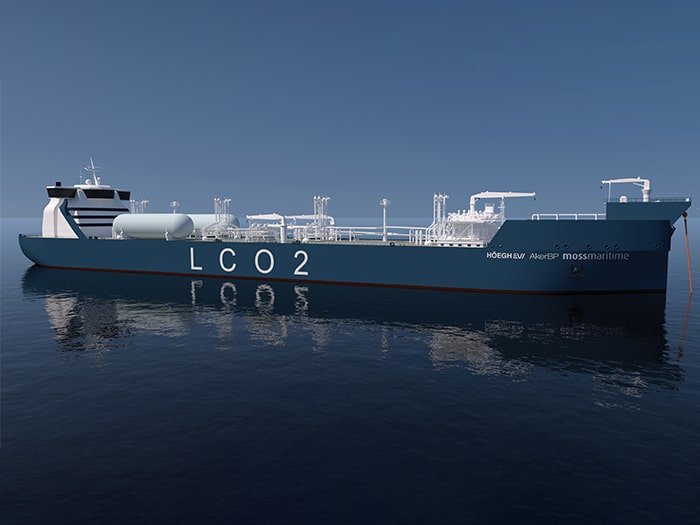Image: Höegh Evi and Aker BP
Höegh Evi and Aker BP Receive Approval for Next-Generation Liquefied CO2 Carrier
Höegh Evi and Aker BP have recently obtained Approval in Principle (AiP) from DNV for their innovative liquefied CO2 (LCO2) carrier. This vessel, jointly developed by Norwegian companies Höegh Evi, Aker BP, and Moss Maritime, is specifically designed to transport captured CO2 from European industrial emitters to offshore sequestration sites on the Norwegian Continental Shelf (NCS).
New CO2 Handling Class Notation
The AiP granted by DNV marks the first review under the new CO2 RECOND class notation, tailored for CO2 handling and conditioning. This comprehensive assessment includes a detailed review of the vessel’s design, including its onboard CO2 conditioning module.
Key Features of the LCO2 Carrier
The next-generation LCO2 carrier plays a crucial role in a fully integrated carbon removal solution for both large and dispersed EU emitters. By incorporating CO2 conditioning and offloading capabilities directly into the shuttle carriers, the design simplifies operations, reduces the risk of impurity co-mingling, and ensures reliable injection into offshore reservoirs. The two approved vessel variants offer total capacities of up to 50,000 cubic meters of liquid CO2.
Application for CO2 Storage Licenses
Höegh Evi and Aker BP’s CCS solution is eligible for application to Aker BP-operated CO2 storage licenses on the Norwegian Continental Shelf, including EXL 005 Poseidon and EXL 011 Atlas. Initially designed to handle up to 10 million tonnes of CO2 annually, the solution can be scaled to meet increasing market demands.
Industry Insights
Nils Jakob Hasle, EVP of clean energy at Höegh Evi, expressed confidence in the technical solution, emphasizing its role in delivering a cost-efficient pathway to decarbonization. Aker BP’s Ørjan Jentoft highlighted the collaborative efforts to develop innovative CCS solutions, while DNV Maritime COO Christina Saenz de Santa Maria commended the project’s progress towards safe and sustainable CO2 transportation and storage.

